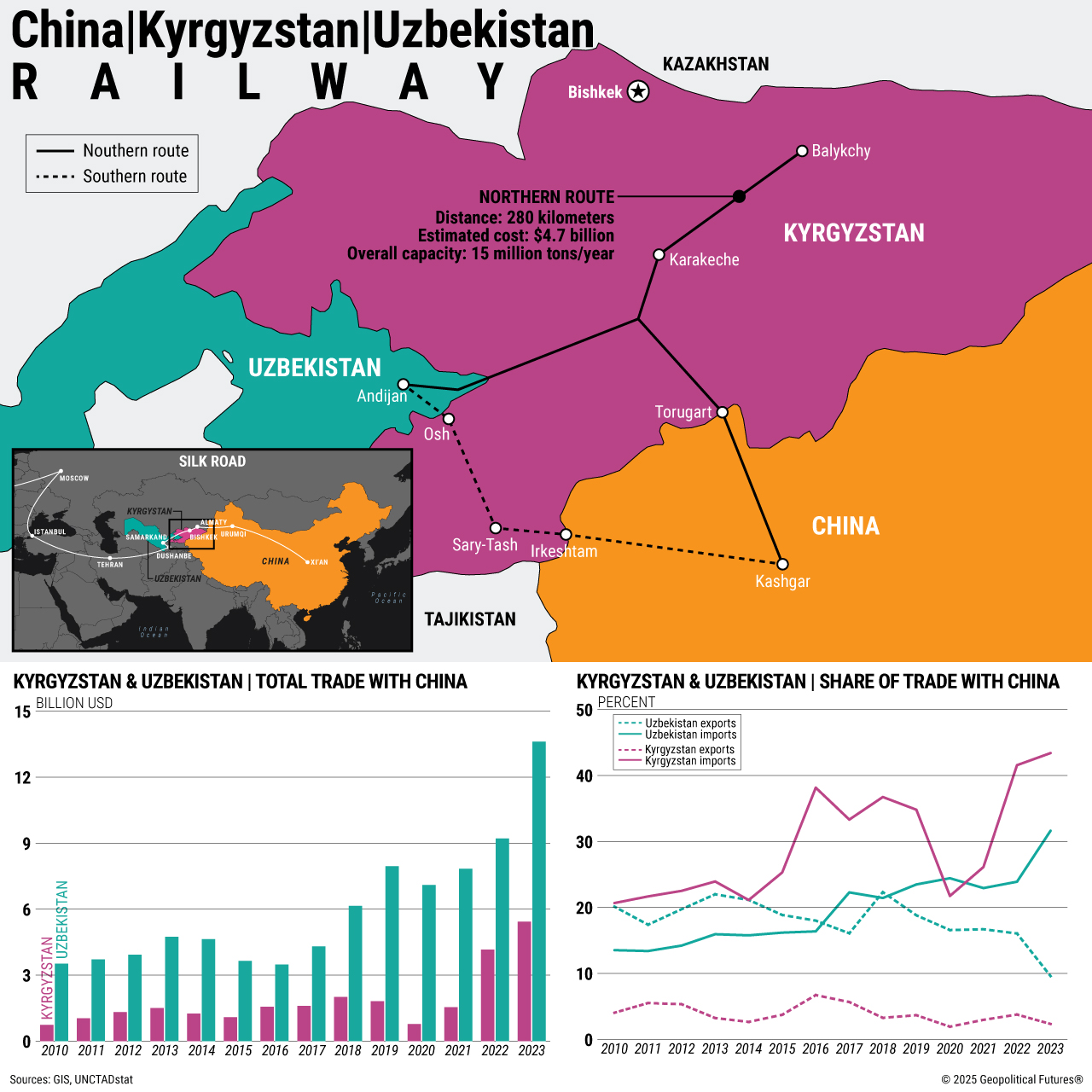China is actively seeking a route to Europe that bypasses Russia, driven by Western sanctions that obstruct trade and instability along sea routes. Such a route would enable China to expand its exports, enhance its competitiveness and speed up delivery while increasing trade volumes. At a time when the Chinese economy is under immense pressure, achieving these objectives is critical. Fortunately for Beijing, next door is Central Asia, which not only includes dynamic developing economies such as Kazakhstan and Uzbekistan but also could serve as China’s link with Europe.
In late 2024, Kyrgyzstan hosted the launch ceremony for the China-Kyrgyzstan-Uzbekistan (CKU) railway, a long-awaited project along the historical Silk Road. Originally proposed by Uzbekistan in 1996, the project gained traction only recently due to geopolitical pressures stemming from the Russia-Ukraine war and sanctions on Russia and Belarus. The CKU railway is expected to transport up to 15 million tons of cargo annually, cutting delivery times to Europe by seven days compared to current routes. For Central Asia’s landlocked nations, the railway promises transformative benefits, including access to China’s coastal ports. However, building the infrastructure demands substantial investment, time and resources – factors complicated by China’s economic slowdown. Furthermore, regional players such as Russia are wary of Beijing’s expanding influence in what they consider their sphere of influence.







